Survival tips and tactics
- By JR Fisher
- Jun 15, 2014

Click here to receive the FREE $50 Ultimate survival report
Survival tips and tactics
Here are just a few tricks that might end up saving your life.
When it comes to survival, there's just one rule: you must forget all the rules! In a period of extreme civil unrest, your survival may depend on doing things you wouldn't do ordinarily, as well as using things for a purpose other than originally intended. In short, you might do some weird things to survive. Below is list of weird survival tools to consider when your life depends on it.
Spit Fishing

The specifics of wilderness survival change a lot depending on what part of the world you’re trapped in. Knowing how to treat hypothermia is about as useful as a bag of malaria for a castaway in the tropics, but it’s the difference between life and death when you get locked in the meat cooler at work again. But one constant in nature is that you can almost always find a body of water—and if you have the know-how, this water means food.
So what if you don’t know how to fish, or don’t have any gear? All you need is a shirt and enough saliva to spit. Spit fishing is a quick way to catch minnows and small fish, which can then either be cooked up into a crunchy goulash or used as bait to catch bigger fish. All you do is wade out into the water, lift the front of your shirt to improvise a net under the water’s surface, and spit. Minnows are attracted to the spit—they think its food—and when they’re clustered in front of you, jerk your shirt up out of the water.
Tampon fishing bobber
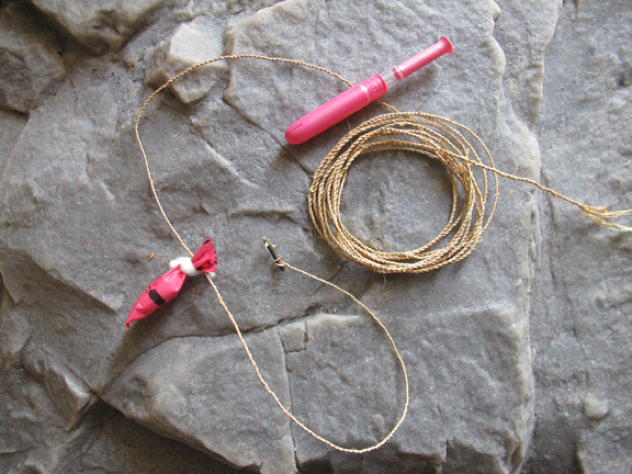
Tampons are almost as useful for surviving in the wild as condoms—and as weird as that sounds, it’s not even a little bit sarcastic. A tampon has four basic parts: a plastic tube, cotton wadding, string, and an airtight wrapper. For a quick DIY fishing bobber, open the wrapper at one end, take the tampon out, and then tie the wrapper closed with a bubble of air inside.
If it doesn’t float, stuff some of the cotton into the bubble. Now you can tie your bobber to a fishing line and leave it while you take care of more important things, like scaring all those bears away from your campsite. It’s all about multitasking.
But that’s not all you can do with a tampon. The cotton makes perfect tinder for starting a fire. Stuff the cotton into the plastic tube to make a filter straw for drinking sediment-heavy water. Use the string to tie a puff of cotton to the end of a wooden skewer—and now you have a dart for your blowgun. At the very least, the absorbent cotton makes an effective bandage for cuts and scrapes. Perhaps you should make room for tampons in your survival kit.
Ice lens
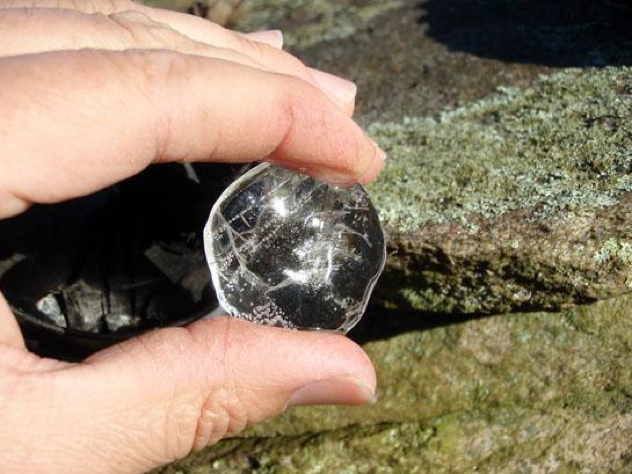
So you’re stuck in an icy wasteland and you need a way to stay warm. Maybe the weather on your camping trip took a turn for the worst; maybe your plane crashed and you’re being methodically hunted by a pack of wolves; maybe you live in Detroit—but regardless of the predicament, what you need is a fire. Fortunately, the very thing that’s killing you can save your life: ice.
An ice lens captures the sun’s light and focuses it onto one point, just like a magnifying glass. If that focal point gets hot enough, and if it’s focused on something dry and flammable, you get a flame. It’s such a simple concept, but put to work in a genius way. To form an ice lens, basically you take a chunk of ice and twist it around on the edge of a pipe. The circular pipe edge carves away the chunks and irregularities, and eventually you end up with a perfect ice sphere, which is essentially a rustic kind of Fresnel lens.
Watch Compass
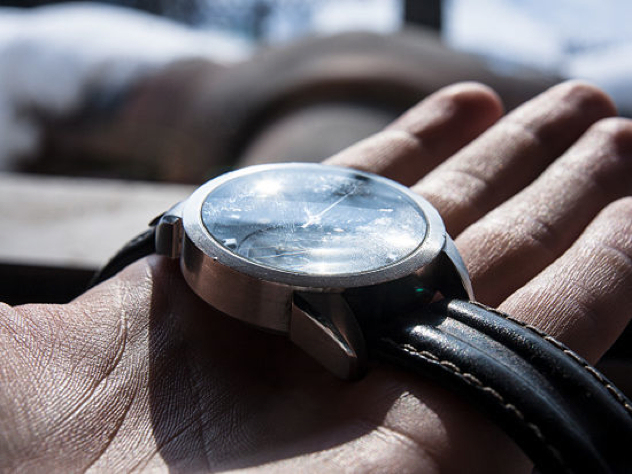
Losing your direction without a compass can be a deadly mistake, and nature is not a forgiving beast. If you’re willing to wait a whole day, you can figure out west and east by the direction of the setting sun; but without food and water, time is a luxury you might not have. That’s why getting an accurate compass bearing is crucial, and you can do it easily with a simple analog watch.
Hold your watch horizontally and point it so that the hour hand is facing into the sun. At the center point between the 12 and the hour hand is your north/south line, with north facing away from the sun. So if the hour hand is pointing at 4, for example, the 2 would point towards the south and the 8 would point towards the north.
Just remember, this only works in the Northern Hemisphere; and during Daylight Savings Time you would use the 1 instead of the 12 to determine the center line. If you’re in the Southern Hemisphere, orient the 12 directly towards the sun, and the north/south line will still cut directly between the 12 and the hour hand, but north will be closest to the sun.
Water from dirt
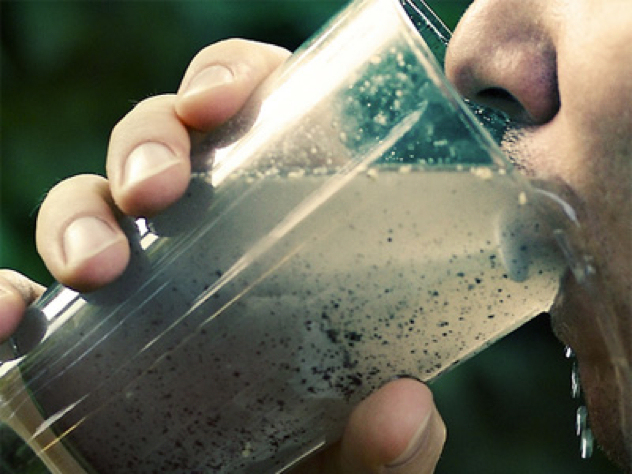
Water is always your most valuable resource; most people die from dehydration after three or four days without the stuff. Although there are cases of people lasting at least a week without water—the crew of the downed plane Lady Be Good survived walking one hundred miles (160km) across the scorching Libyan desert for eight days with no water—it’s not a good idea to tempt fate. If you’re pinched for water, you can always get it directly from the ground itself.
Enter the solar still, an easy-to-make contraption that uses a tarp or a piece of plastic to collect evaporated water from dirt. All you need to do is dig a hole in direct sunlight and drape your tarp over the opening. Secure the edges with logs, rocks, boxes of tampons—anything you have lying around. Then—and this is important—place a little pebble right in the middle of the tarp, so it pulls the plastic down into an upside-down pinnacle.
When the sun hits the tarp, the air trapped inside the hole heats up, which in turn evaporates the moisture in the dirt. As that moisture rises, it will condense on the underside of the tarp and run down to the center—the lowest point. A cup or bowl on the floor of the hole right below this point will catch the pure, distilled water as it drips down—potentially saving your life.
Condoms
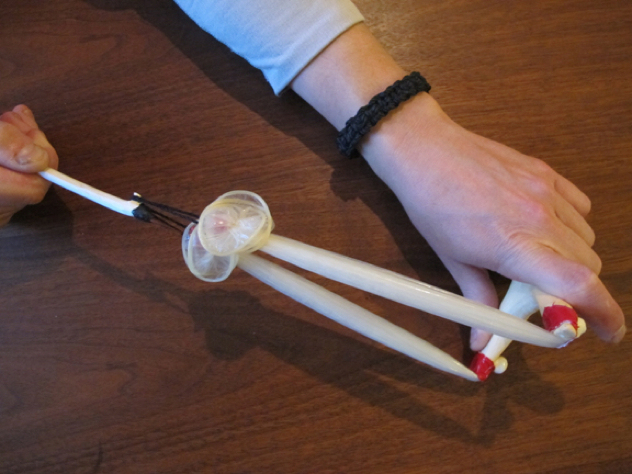
It’s an old adage: if you have enough condoms, you can survive in the wild for years. And even if we just made that up, it’s still true. Condoms can provide you with food, water, fire, and shelter—the four key elements of survival. Getting stranded with a condom shipment would be the luckiest break apart from not getting stranded at all. For starters, condoms make very decent water storage containers. You would be surprised at how big they can get—two or three full condoms will provide enough water for a person for a week.
Condoms also burn. A latex condom will light up instantly, making it perfect tinder for getting a fire going. And since they’re watertight by nature, they can also be used to safely carry dry tinder. In a pinch, you can use condoms as rope to tie up a tarpaulin for shelter or—seriously—even turn them into a slingshot to hunt small game. Yes, you can hunt wild animals with condoms.
http://www.wilderness-survival.net/
http://adventure.howstuffworks.com/5-everyday-survival-items.htm#page=4
